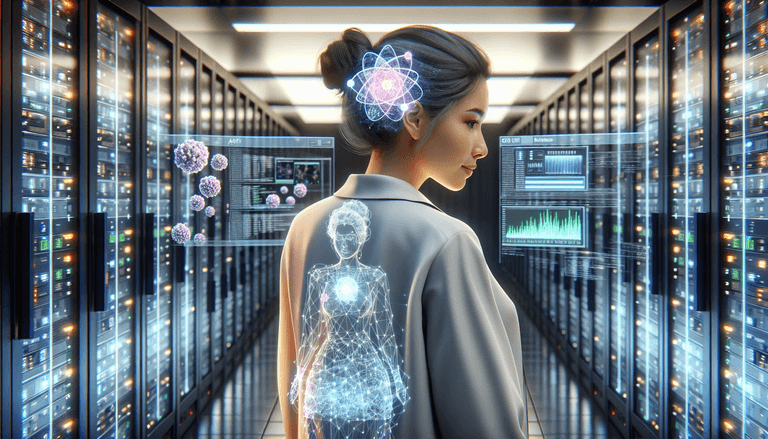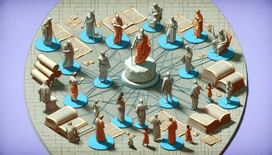The Plutonium Revolution
Picture this: a world where Marie Curie, the pioneering physicist known for her discovery of radium and polonium, could upload her research to the cloud. Would the cloud have been the silver lining to her brilliant storms of discovery, or simply a radioactive puddle in the vast ocean of the internet?
The Curium Cloud
Marie had already made her mark as a trailblazer in the field of radioactivity, but imagine the leaps and bounds she could have achieved with access to cloud computing! No more dusty notebooks or laborious computations scratched into the margins of papers. Between the theoretical breakthroughs and experimental feats, Marie would be as busy as a positron in a cyclotron.
Here’s how the cloud could have revolutionised her research:
- Data Storage in the Stratosphere: Accumulating nearly as much paper as the British Museum Library, Marie's notes were a minefield of mathematical musings and atomic anecdotes. With the cloud, storing terabytes of data on radium would be but a click away. The cloud could handle more data than you could shake a Geiger counter at, ensuring no atomic detail is left behind.
- Collaboration Across the Airwaves: With cloud-based document sharing, Curie could collaborate with other scientists, perhaps even slap a few radioactive equations into a Slack channel with Albert Einstein. Instead of having to run between labs and libraries, she'd be "Marie me, beam me up!".
- Computational Power for Powerhouses: Solving complex equations for half-life calculations would be a breeze with cloud-based computation power. Curie could alchemise algorithms faster than you can say "atomic mass," while the cloud algorithms process billions of calculations simultaneously. Who knows, she might even solve her problems faster than a piece of uranium decays!
Breaking Barriers with Bits
Marie’s research was akin to forming the first ripples in a pond that would eventually become a tidal wave of scientific achievement. Would the use of cloud computing make her less hands-on? Perhaps she’d be less hands-on with the test tubes, but if anything, it would amplify her capabilities.
With a central hub for all things atomic and anthropogenic, Curie could have organised those notorious radium parties via Google Calendar, inviting the avid scientific community to discuss the glowing ramifications of exposure to radium, perhaps even over a Zoom call. “Can you hear me now, Ernst? How’s the radiation across the pond?”Let’s not radioactive-shame him, Marie!
What's Curie-ous Today?
The most thrilling aspect of Curie’s hypothetical cloud-enabled laboratory was the democratisation of information. Marie would never have to horde discoveries away; instead, she’d be the DJ of digital dissemination, where every scientific record is a remix for those curious enough to listen.
Flask half-full or half-empty, it’s clear Marie Curie in a cloud-infused realm would have been akin to a scientific storm brimming with potential, a hurricane of ideas downloaded at 100 megabytes per second. You could say she’d be over the full moon and halfway to a black hole with joy.
Alas, Marie didn’t have the allure of the digital world, and yet she made waves that are still felt today, undiluted by time's passage. Imagine the possibilities if she had!
Conclusion: Cloud Curi-osities
We might not have Marie’s direct insight into how modern tech could have shaped her work, but imagining the possibility does underscore the importance of technological advancement in scientific discovery, a motif we continue weaving through our own present-day lab notes.
Perhaps future historians will one day ponder our modern geniuses and say, "What if they didn’t have access to such technologies? Would Timewarp Terry have even asked these questions?" As I file this article in my own digital corner of the cloud, waiting to be disseminated into the WiFi-enabled abyss, I am struck by the notion that technology has no limits, and neither should our curiosity. Mind the radium, but do explore the cloud!







